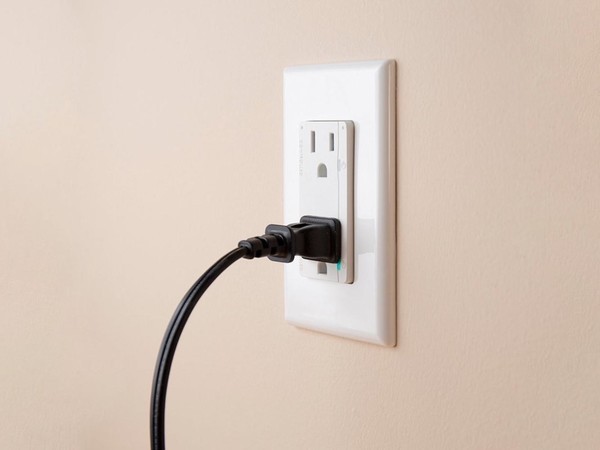
When you think of a smart plug, you likely think of a device that plugs into an existing outlet and connects to Wi-Fi. The ConnectSense Smart In-Wall Outlet is a bit different, as the name might imply. It sits directly in the wall and replaces an existing outlet, which means some wiring work is required. The installation is not as simple as it is with other smart plugs (and it isn’t a great choice for renters as a result), but the benefit is that it can act as a smart plug for tight spaces, such as behind the couch.
The ConnectSense Smart In-Wall Outlet measures the amount of energy used by any device plugged into it, which gives you a great idea for how much power a specific appliance might use. You can check out real-time voltage readings on the ConnectSense app. It’s a great way to spot any appliance that’s drawing phantom power, and can help cut down on utility costs.
On the technical side of things, the ConnectSense Smart In-Wall Outlet works with all three major smart assistants. The majority of smart outlets only work with Google Home or Amazon Alexa, so HomeKit users will be pleased to see Siri included this time around. The ConnectSense works on the 2.4 GHz Wi-Fi band and is available in two different models: 15 amps and 20 amps, priced at $80 and $100 respectively. Both are available for purchase from Amazon. One thing to note is that this smart plug does require a neutral wire to operate, so if you do not have one in the outlet you want to replace you will either need to install one or find a different outlet.
Smart outlets are no different than smart plugs in operation. You can set schedules, control the flow of power from your phone, monitor energy usage, and much more. They are great solutions for turning “dumb” appliances smart, such as lamps or electric space heaters. Smart outlets and plugs are also perfect options for appliances that might be dangerous if left turned on, such as an iron or oven. With the ability to turn off power remotely, you will never have to wonder if you left the stove on while you’re out and about.
Editors' Recommendations
- How to save money with your smart home this winter
- Fluid One gives you point-and-click control of your smart home, from your smartphone
- How to control your Christmas lights with voice commands
- WearOS is terrible at controlling your smart home. WatchOS does it better
- Your vacuum might be vomiting dust all over your house




